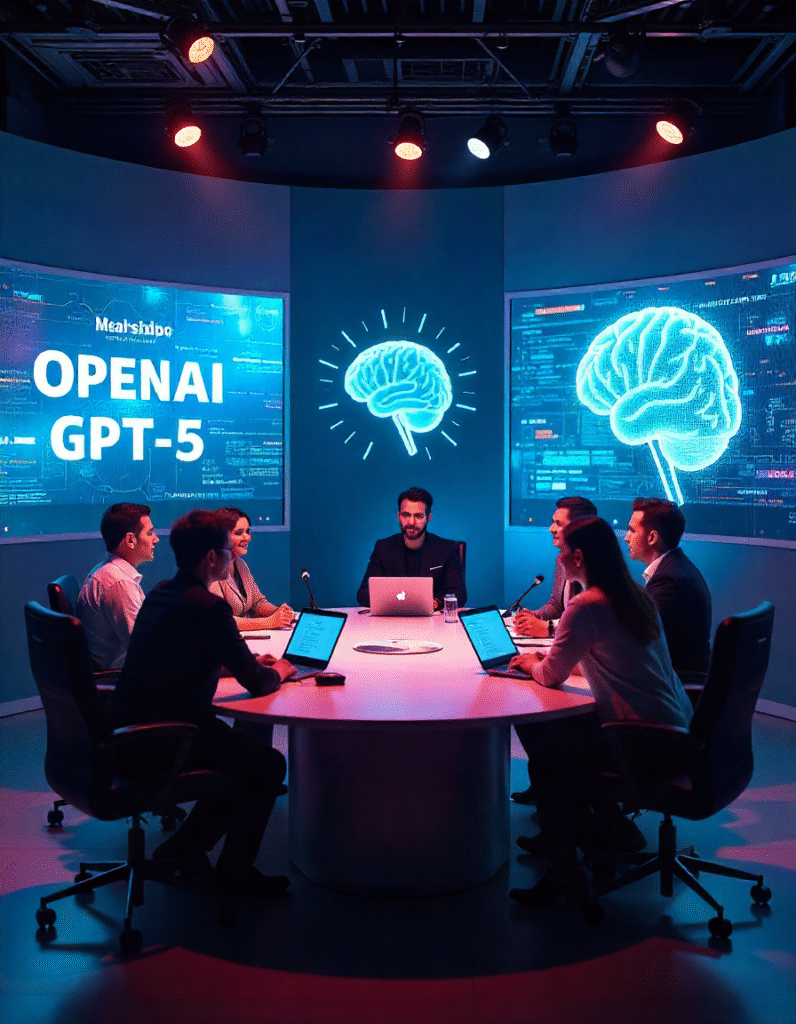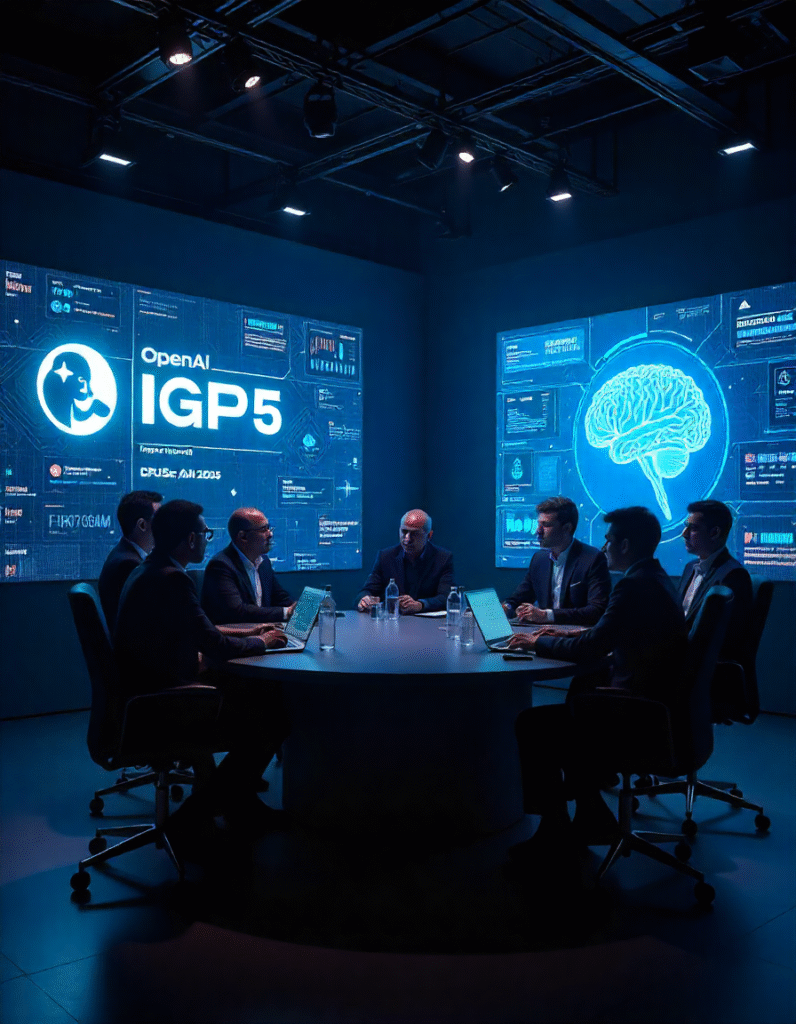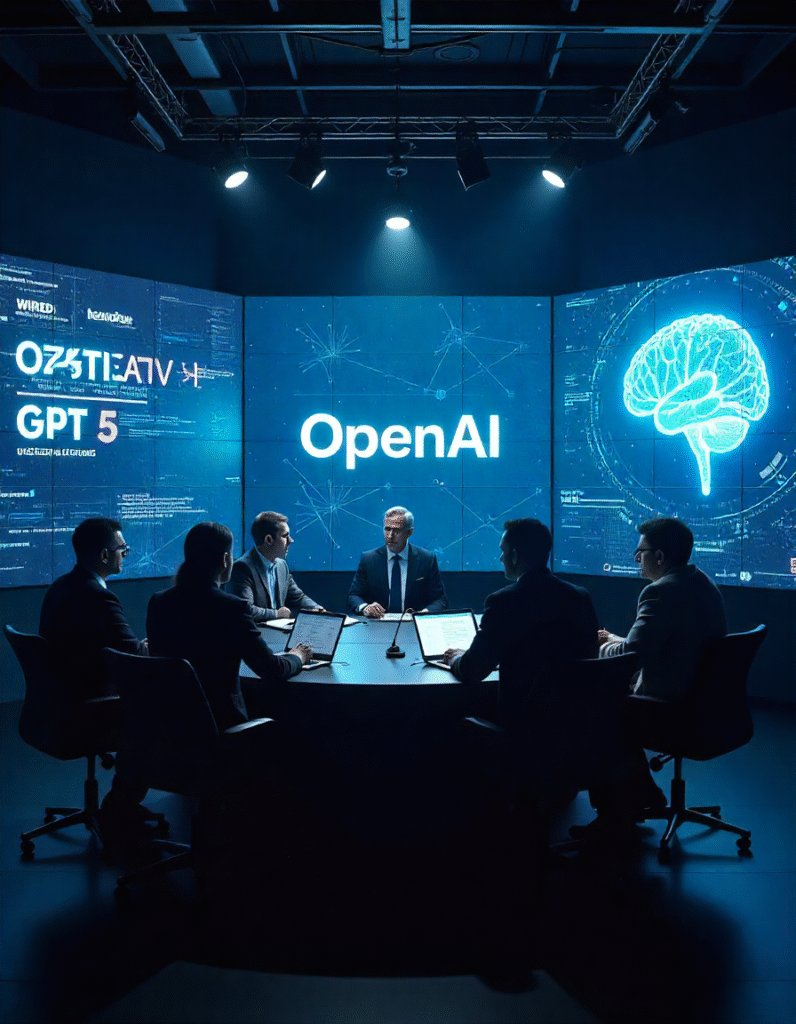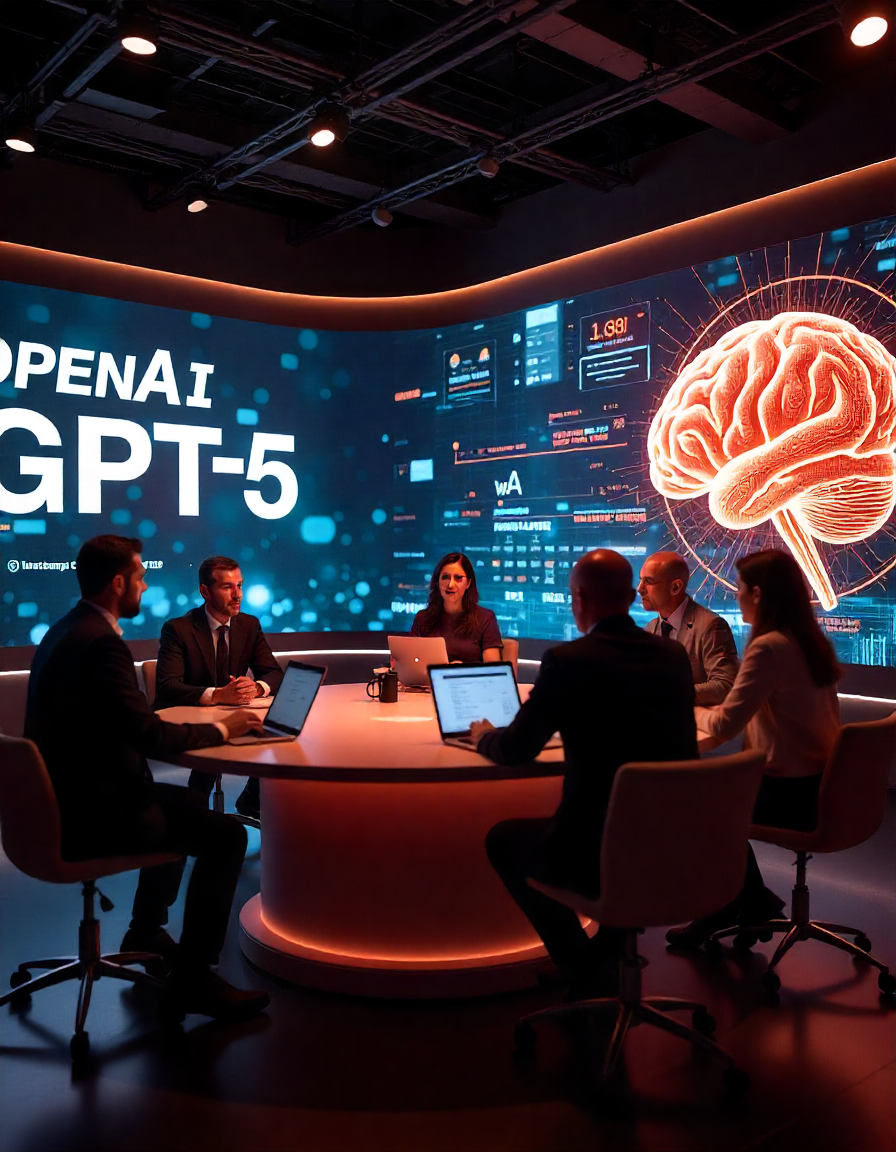OpenAI launches GPT-5 — WIRED hosts an August 14 livestream. Learn features, rollout plan, expert take, and what GPT-5 means for U.S. users and developers.

Lead — the quick, newsy hook
OpenAI has officially unveiled GPT-5, and WIRED is hosting a dedicated livestream to dig into what the new model means for ChatGPT users, developers, and businesses. The livestream — scheduled for August 14, 2025 — will feature WIRED reporters and experts breaking down the release, answering audience questions, and unpacking how GPT-5 might change the everyday AI experience in the United States. WIREDOpenAI
Why this matters now
GPT releases have historically shaped both tech product roadmaps and public debate about artificial intelligence. GPT-5 arrives amid rapid competition (Google, Anthropic, xAI) and heavy commercial interest: vendors are quickly integrating the new model and policy-makers are watching closely. Early reporting shows GPT-5 is rolling out broadly and already finding its way into developer tools and Microsoft products — making this a release with immediate practical impact. ReutersSource
The WIRED livestream: what to expect
WIRED’s event — “What GPT-5 Means for ChatGPT Users” — is billed as a practical, audience-focused conversation with WIRED reporters Reece Rogers, Kylie Robison, and Will Knight. The session promises live analysis, viewer Q&A, and discussion of both technical innovations and real-world use cases for American users: from coding help to content creation and enterprise workflows. If you want a plain-English, journalist-driven take instead of a product demo, this livestream is designed for you. WIRED
What OpenAI says about GPT-5
OpenAI’s announcement frames GPT-5 as its “smartest, fastest, most useful model yet,” with improvements targeted toward coding, reasoning, and so-called “agentic” or tool-calling tasks. OpenAI’s webpages emphasize new API controls — like a verbosity parameter and a reasoning_effort option — that let developers tune responses for speed versus depth. The company is also rolling GPT-5 out to Team users first, with wider Enterprise and education access following shortly. OpenAI+2OpenAI+2

The big features (plain language)
Here’s what journalists and OpenAI highlight as the concrete improvements you’ll actually notice:
- Better coding and UI generation — GPT-5 produces higher-quality code and can scaffold front-end UI from minimal prompts, making it more useful for developers and designers. OpenAIFortune
- Tighter factual grounding — reviewers report fewer “hallucinations” (incorrect but plausible-sounding answers), especially on tasks requiring multi-step reasoning. Financial Times
- Personality & steerability — new preset personalities and tone controls let users shape how the model responds (e.g., concise technical helper vs. conversational listener). WIRED
- API ergonomics for developers — extra parameters for verbosity and reasoning effort, plus support for custom tools that accept plaintext calls. These are designed to make GPT-5 easier to integrate into apps and services. OpenAI
Who’s getting access first (and what that means)
OpenAI says GPT-5 is rolling out to Team users now, with Enterprise and Edu access following. The model is also available via the OpenAI API so developers and startups can start building on it immediately. Microsoft, a key partner, has already announced plans to incorporate GPT-5 into its consumer and developer products — which could mean faster adoption for businesses that use Microsoft 365 and Azure. For U.S. companies, that’s a fast path to production features without building large ML infrastructure in-house. OpenAISource
Early reactions — praise and skepticism
Initial coverage shows a mix of enthusiasm and caution:
- Praise: Many outlets and analysts call GPT-5 a meaningful step forward for reasoning and coding tasks. Its pricing and performance trade-offs appear competitive compared to other recent models, making it an appealing option for startups and enterprises alike. PlatformerFortune
- Skepticism: Some experts argue GPT-5 is “evolutionary rather than revolutionary,” noting that rival models still challenge OpenAI on certain benchmarks and that the AGI question remains unresolved. Those concerns are part technical, part philosophical: improvements matter — but so do safety, transparency, and long-term governance. Financial Times

Numbers and scale — what the press is reporting
A few useful figures and context points that collectors of industry trends will want:
- Rollout timing: Major outlets reported the public GPT-5 announcement and developer availability in early August 2025. OpenAI published product pages and blog posts describing rollout stages. OpenAI+1
- Corporate interest: Microsoft confirmed integration plans with GPT-5 and positioned Azure as the training backbone — signaling enterprise-scale deployment. Source
- Market stakes: Financial press has tied GPT-5’s arrival to investor interest in AI platform valuations; sources mentioned high valuation targets (reporting around half-a-trillion dollars in speculation for OpenAI-related deals). (Note: valuations are reporting-based and subject to change.) Financial Times
How GPT-5 could change the workflow for U.S. users
Here are practical scenarios where many Americans may feel the effects:
- Professionals & knowledge workers: Faster, more accurate summarization and code generation could shave hours off routine tasks — drafting proposals, debugging, or generating marketing copy.
- Students & educators: Improved reasoning and steerability may make GPT-5 a better tutoring and drafting tool, though educators will still need policies to handle academic integrity.
- Developers & startups: With more control parameters and better out-of-the-box code generation, small teams can build richer features without huge compute budgets.
- Consumers: As GPT-5 becomes integrated into apps (search, office tools, customer service), everyday product experiences may feel smarter and more helpful. OpenAI+1
Safety, regulation, and ethics — the continuing debate
GPT-5’s rollout does not pause the policy conversation. Regulators, privacy advocates, and civil-society groups continue to press for guardrails around misuse, disinformation, and data privacy. OpenAI has historically emphasized internal safety testing and red-teaming; with GPT-5’s wide availability, both U.S. federal and state-level actors are likely to reexamine oversight frameworks for AI products. Expect public-interest questions to center on provenance (how the model sources and justifies facts), auditability (how its decisions can be traced), and access restrictions for age- or risk-sensitive contexts. OpenAIFinancial Times
What journalists and experts will ask at the WIRED livestream
If you tune in on August 14, here are smart, specific questions to look out for or pose during the Q&A:
- How does OpenAI measure and report reductions in hallucinations? What benchmarks showed improvement?
- What safeguards are in place for agentic behaviours (when the model calls tools or acts autonomously on behalf of users)?
- How will OpenAI balance product rollout with third-party model audits or independent testing?
- What are the enterprise pricing and quotas for GPT-5 compared to GPT-4 and competitors?
- How will Microsoft’s integrations affect small-business access and competition in AI tooling? OpenAISource
Developer note: integrating GPT-5 (short, practical tips)
If you’re a developer or a startup in the U.S., here are three quick tips for early experiments:
- Start with verbosity and reasoning parameters — use
verbosity(low/medium/high) andreasoning_effortto find the sweet spot between speed and correctness. OpenAI - Sandbox tool calls — test custom tools in a controlled environment to validate behavior before reaching real users. OpenAI
- Monitor costs — new performance gains can tempt longer or more complex prompts; keep logging and alerts to detect cost spikes. (See OpenAI’s API docs for quota and pricing details.) OpenAI
What competitors are doing — a quick roundup
GPT-5’s launch is part of a wider flurry: Google, Anthropic, and xAI all released or updated models in 2025, each emphasizing different strengths (multimodal reasoning, safety guards, or speed). The result is healthier choice for developers and buyers but also a more complex procurement landscape for enterprises deciding which models to trust and integrate. That competition is arguably good for consumers: it keeps pricing competitive and innovation rapid. FortuneFinancial Times
Real-world reactions — early user impressions
Journalists and technologists testing GPT-5 report that:
- The model often handles multi-step tasks more reliably than GPT-4, especially in coding scenarios.
- Personality presets and conversational modes feel polished and user-friendly in many demos.
- A few reviewers stress that creative writing still occasionally lags behind human nuance, so content teams should treat GPT-5 as a force-multiplier rather than a drop-in replacement for human judgement. PlatformerFortune
How to watch and prepare for the WIRED livestream (practical)
- Date & format: The WIRED livestream is scheduled for August 14, 2025 and will be hosted on WIRED’s website and likely streamed via popular embedded video services. Have a browser tab open and questions ready. WIRED
- Bring context: If you’re a developer, have your primary use cases ready (e.g., code generation, data analysis) so you can judge whether GPT-5’s improvements matter to your stack.
- Follow-up: Expect news outlets to publish deeper analysis and benchmarks in the 48 hours after the stream — this is when community tests and comparisons appear. Platformer
Limitations and caveats — an honest look
No single model is perfect. While GPT-5 appears to move the needle on several metrics, independent benchmarking, long-term safety testing, and head-to-head comparisons will be necessary to fully assess strengths and weaknesses. Also, corporate rollouts can lag for smaller customers; even if OpenAI announces API access, throttles, quotas, or region-specific restrictions may affect real-world availability. Readers should view the WIRED livestream as a helpful journalist-led explainer — not the final word. Financial TimesOpenAI

Quick FAQ (for busy readers)
Q: When is the WIRED livestream?
A: August 14, 2025. WIRED
Q: Is GPT-5 available now?
A: OpenAI announced GPT-5 in early August 2025 and is rolling it out to Team users and via the API; Enterprise and Edu access follows. OpenAI+1
Q: Will GPT-5 be in Microsoft products?
A: Yes — Microsoft confirmed it will incorporate GPT-5 into various consumer and developer products. Source
Q: Is GPT-5 AGI?
A: No—OpenAI and analysts stress GPT-5 is an advanced model but not artificial general intelligence. PlatformerFinancial Times
Sources and credibility
Reporting in this article draws on official OpenAI product pages and blog posts, WIRED’s livestream announcement and coverage, and major news outlets including Reuters, AP, The Verge, and platform analysis. These sources provide a mix of company statements, journalist analysis, and early independent impressions — useful for forming a balanced view during the early rollout. OpenAIWIREDReuters
Human-written conclusion
GPT-5 is not a distant prophecy — it’s here, rolling out now, and WIRED’s August 14 livestream gives Americans an accessible, journalist-driven look at what really matters: how this tech will change everyday tools, what safeguards are in place, and how businesses should prepare. If you’re a developer, product manager, or simply someone who uses AI-powered tools every day, this moment is worth attention: the changes are incremental but tangible — better code assistance, cleaner factual answers, and more control over how the model behaves. Watch the livestream, read independent benchmarks in the days after, and treat GPT-5 as a strong new tool in a toolkit that still requires human oversight. In short: promising progress, not miracle, and a smart reason to pay attention. WIREDOpenAI
